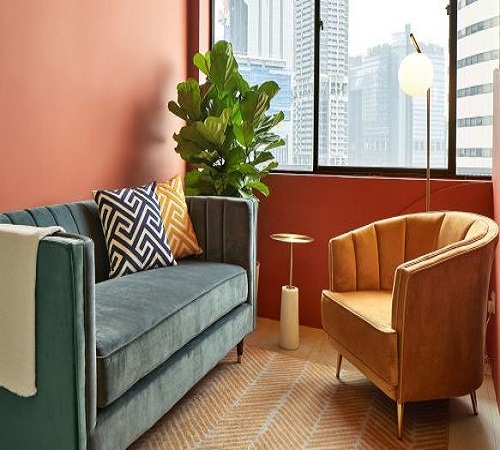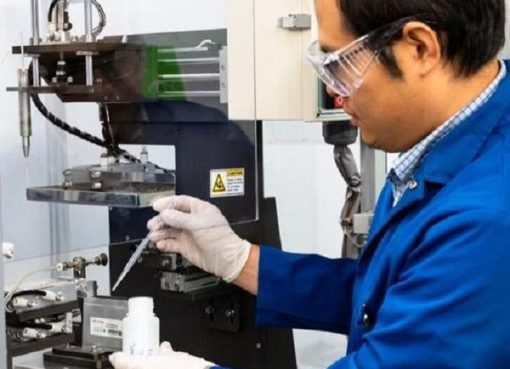Even before the COVID-19 pandemic hits the world hard this year, the coworking space industries have been making headlines in global media, thanks to companies such as WeWork. Their IPO failure had led the public to question the future of the industry.
According to Yuanzheng Lee, founder of A Space Between, the future lies in industry-specific coworking spaces, which is going to see growth in demand.
“An observable example of innovation with regard to a central kitchen model for the F&B industry – a specific shared facility that caters to a particular vertical (i.e., bakery, desserts, hot kitchen) coupled with a business’ operational needs to manage the supply chain, versus a generic shared central kitchen that simply provides a kitchen with shared equipment,” she explains, likening the typical coworking spaces to shared central kitchen model.
“While it is industry-specific to tech startups and entrepreneurs, the primary focus caters to those reliant on desk-bound duties and traditional interactions for collaboration. I believe that there is incredible value to the sharing economy; that will evolve to provide a more customised approach to serving each vertical within the different industries,” she points out.
Understanding this insight, as a newcomer in the Singapore coworking space scene, A Space Between aims to make that differentiation by offering spaces for a specific kind of tenant: Mental health professionals.
A safe space to practice
Launched in Q2 2019, A Space Between is a coworking space that specifically targets mental health professionals –from psychotherapists to coaches to counsellors– as its tenants.
“In essence, A Space Between provides a conducive environment to conduct mental health therapy sessions with a minimal commitment on the part of the practitioner,” Lee explains in an email interview with e27.
As a space that will be used by therapists to work with their clients, there are several details that A Space Between needs to pay attention to.
“On the most basic level, it should make one feel safe, comfortable and be easily accessible. We spared no expense looking over the tiniest of details, from the size of the rooms, to the colours used, even to the layout of the furniture. All of these have been critically considered to optimise the experience for a therapy session,” Lee further elaborates.
“We are community-driven and what that means is that we are constantly working with our members to identify areas of improvement, so we can adjust according to their needs and enhance the overall experience for our members and their clients,” she continues.
Currently home to 20 therapists, the company is aiming to grow to 200 by 2022.
“We acquire our users largely through digital marketing, social media outreach and traditional word-of-mouth referral programmes,” Lee says.
A safe space during the pandemic
It is no longer a surprise that the recent global health crisis has shaken up the global coworking space industry, or even the office space in general. In an article, Vox even detailed on how the COVID-19 pandemic will “likely change the way office looks and works.”
Interestingly, Lee says that the COVID-19 pandemic and the Circuit Breaker Measures as implemented by the Singapore government did not impact the company’s business “too severely.”
Instead, she even believes that the measures will impact the business positively.
“I believe the circuit breaker measures and its impact on the way we work and communicate, will steer practitioners towards a plug-and-play sharing model like ours, where one is empowered to be self-employed yet unencumbered by lofty rental deposits and renovation costs,” she points out.
As the public struggle with having to stay and work from home in the greater part of 2020, the COVID-19 pandemic has also brought greater attention to mental health issues in various countries, including Singapore. As an example, Straits Times reported that the National Care Hotline in the country saw more than 6,600 calls within just one month since its launch in April.
“I would say that the pandemic has brought attention to what basic healthcare services are and prioritised the need for easier access to mental health support services. We have seen an uptick in the demand for our shared space, primarily from those who traditionally have been working out of a shared clinic or office space,” says Lee, citing various reasons behind the uptick.
A safe space to expand
The history of A Space Between began when Lee’s friends –a group of psychotherapists and counsellors– moved into private practice and were looking for a suitable space to conduct their sessions.
“We discussed the issues they faced in setting up their private practice. Traditional coworking solutions such as WeWork and JustCo were not conducive and appropriate to conduct mental health therapy sessions as they are essentially an office space built around an energetic startup environment that is neither discrete nor soundproof,” Lee elaborates.
There were also other technical considerations such as lease and renovations, and the idea that traditional mental health service setups tend to be clinical and rigid.
To tackle this, Lee taps into her formal education background in strategic design management, which she describes as giving her “the ability to synthesise a business solution with a design thinking process.”
The company is currently self-funded but Lee says it is open to external funding opportunities.
“We are refining our current business practices and looking to secure our next few locations to provide better accessibility for our members. Regionalisation and internationalisation are part of our pipeline,” she closes.
Source: e27










